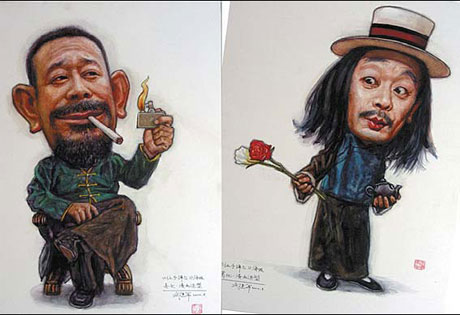Life and Leisure
Drawn to the movies
By Chen Yingying and Wen Chihua (China Features)
Updated: 2010-11-18 07:49
 |
Large Medium Small |
Wu Jianjun, 60, was working as a machinist in the Beijing Machine Factory when hired to paint film posters in 1980. The factory's auditorium became the theater.
"I loved that job. We were valued by the film companies and appreciated by audiences," he says.
"Back then, hand-painted film posters were the only way to advertise films."
Talking with pride about his work, he says, "We were unknown to the audience, but my works were enjoyed by many people. People would stop by my posters and talk about the films. A good poster could bring in more people to watch the film."
Wu's works included posters for Chinese movies such as Blessings and My Memories of Old Beijing, and for foreign ones such as Duccio Tessari's Zorro and Roman Polanski's Tess. These films were very popular in the 1980s.
"Painters preferred doing posters for foreign films because they were more interesting and Western faces easily stood out on the poster."
Film poster painters from different cinemas in Beijing would see previews of films once a month. "I would design the poster based on my understanding of the film," Wu says.
During the "cultural revolution", film poster painters could not do as they wished. Most of them painted the backgrounds in red, to be politically correct, and portrayed characters wearing stiff expressions.
At first, Wu used charcoal pencils to outline the images. When his skills got better, he painted directly with an opaque watercolor known as poster paint.
"I could finish a poster in one or two days after seeing the film," he says. He could produce as many as four broadside posters and some smaller ones each month.
Posters for any given film would vary from city to city, as they were painted by different artists.
"We would also participate in the national film poster painting competition to learn from each other," says Wu, who visited most parts of the country during the annual National Film Poster Group Exhibition from 1982 to 1992.
Nowadays, high-tech theaters have replaced the old traditional movie houses. But even as poster painters are becoming a thing of the past, hand-painted posters have not been entirely forgotten.
Julian Fisher, a British film poster collector, organized the Movie Art China exhibition of film posters in October in Beijing. More than 300 hand-painted film posters were displayed. He notes that "many people enjoy the posters because they have seen the movies and the posters remind them of the times they used to live in".
Unlike printed movie posters, "hand-painted posters reflect the mood of the movies", Fisher says.
"Each is a work of art."
|
|
